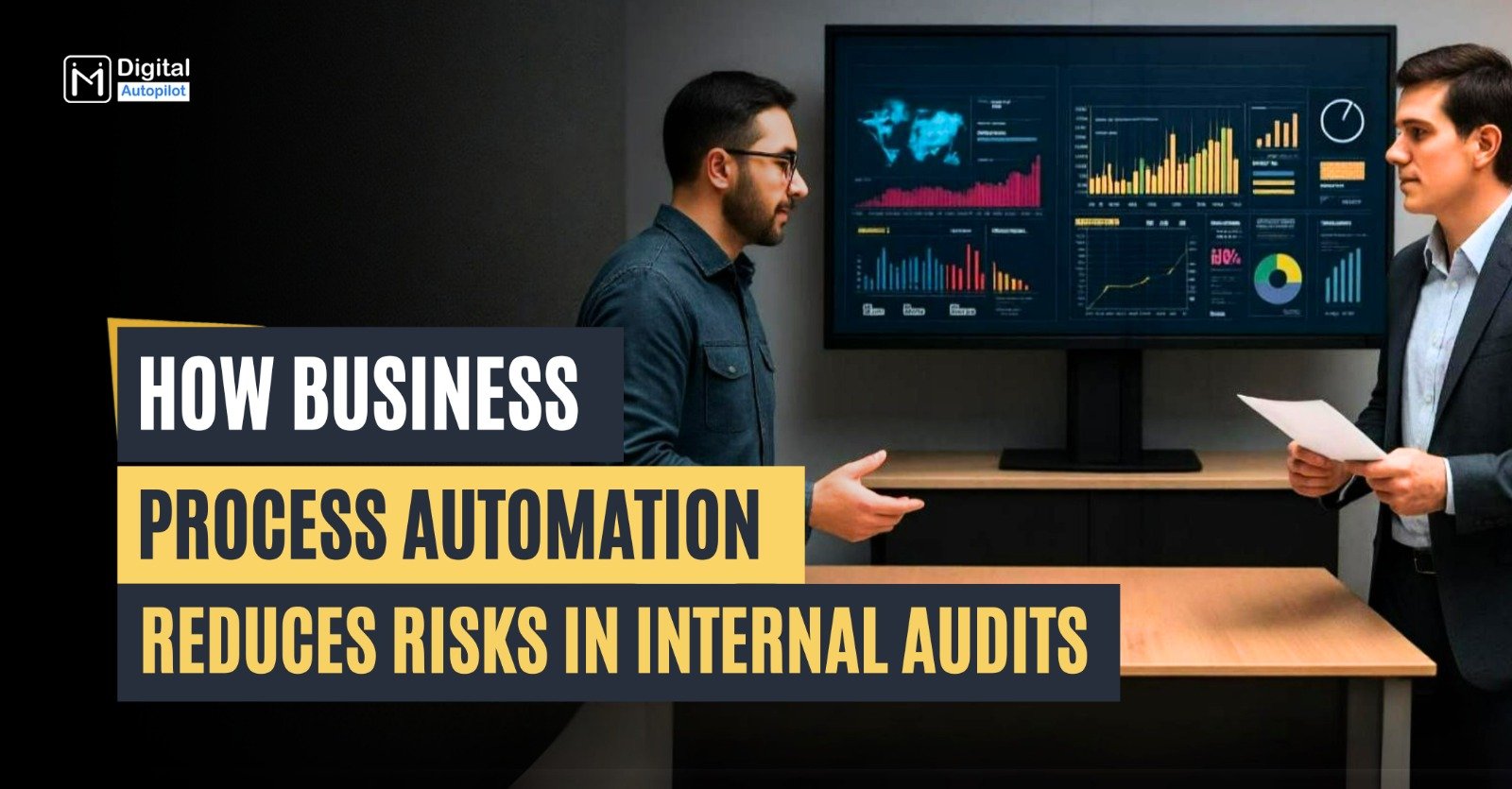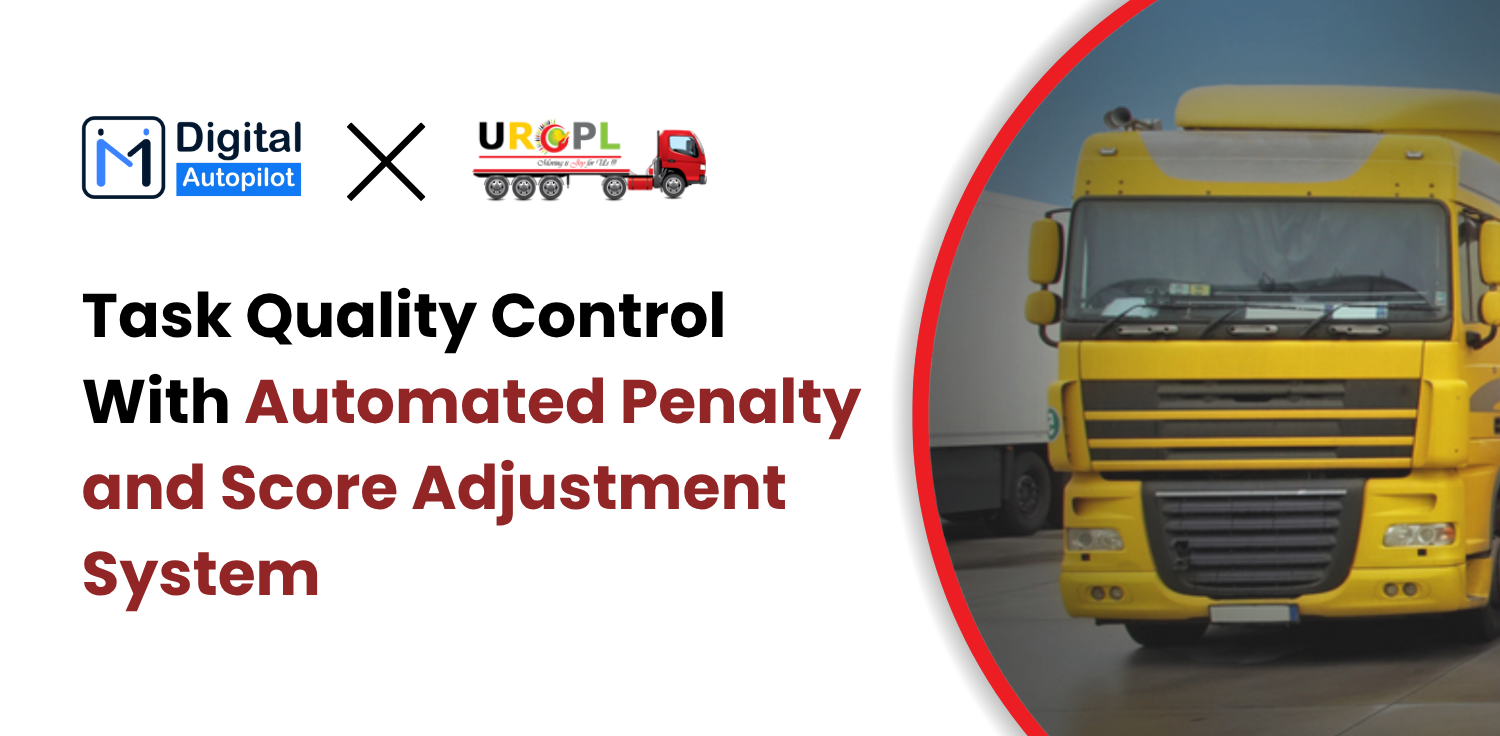Internal audits aren’t just about ticking checkboxes. They reveal whether your business is truly in control — or just running on hope and habit.
But here’s the harsh reality:
Most businesses, especially owner-managed ones, struggle with internal audits because their processes are manual, scattered, and undocumented.
The result? Missed data, incomplete trails, last-minute panic, and avoidable risks.
Let’s be real — the problem isn’t your people. The problem is your process.
In this blog, we’ll show how Business Process Automation (BPA) helps eliminate internal audit issues by bringing structure, transparency, and accountability into your operations.
1. Reduces Errors Caused by Manual Entries
Most audit findings begin with small, unnoticed human errors — missing entries, duplicate bills, wrong dates, delayed updates.
These errors add up and show gaps in your internal control.
How Automation Helps:
Business Process Automation tools like MIDAP automatically record entries—such as sales, stock movement, task completion, or payment reminders—as soon as they happen.
No one has to “remember” to update anything.
This reduces human errors and creates clean, audit-friendly records.
2. Creates a Traceable Workflow for Every Task
Let’s say an auditor asks:
- “Who approved this expense?”
- “When was the order placed and delivered?”
- “What action was taken on this customer complaint?”
In a manual setup, these answers are scattered in emails, WhatsApp chats, or someone’s memory.
With Business Process Automation:
- Every task is assigned with a deadline and priority
- Approvals are time-stamped
- Status changes are tracked
- Comments and files are attached within the system
This creates a clear, traceable path — reducing the most common internal audit issues: missing data and unverified actions.
3. Eliminates Verbal Instructions and Miscommunication
In many businesses, instructions are passed verbally or via personal messages. This leads to confusion during audits:
- “I thought he was handling it.”
- “That wasn’t my responsibility.”
- “We did it, but forgot to record it.”
This ambiguity shows a lack of process — something auditors always flag.
How BPA Fixes This:
With tools like MIDAP, task delegation is done digitally.
- You assign a task to a specific person
- With all details: what, when, how
- It’s recorded in the system — and it stays there
No one can say “I didn’t know” — because everything is trackable.
4. Strengthens Your Compliance with Automated Reminders
Many internal audit issues come from simple forgetfulness:
- Missed tax filing dates
- Unacknowledged SOP steps
- Delayed vendor payments
This isn’t a discipline problem — it’s a system problem.
With Business Process Automation:
- Reminders are sent via WhatsApp, SMS, or email
- Escalations are triggered if deadlines are crossed
- Repeating tasks (like compliance checks) are scheduled automatically
MIDAP even includes an Auditor Module that tracks whether tasks were done on time — and who delayed what.
BUSINESS OWNERS ALSO READ THIS: MIS Dependency Is Hurting Your Business? — Do This Instead
5. Builds a Digital Audit Trail Without Extra Work
One of the hardest parts of an audit is collecting proof:
- Attendance logs
- Follow-up calls
- Stock movement
- Complaint resolutions
If you’re building this “after the fact,” it looks manipulated — even if it’s not.
What BPA does instead:
- Logs everything in real time
- Preserves old records securely
- Shows change history (who edited what, and when)
- Makes reports exportable instantly
So when auditors ask questions, you don’t give explanations — you give evidence.
6. Standardizes Your Processes Across Teams and Branches
Audit issues often arise from inconsistency. One branch follows SOPs. Another one doesn’t. One manager records quality checks, another skips them.
This inconsistency reflects poor control.
BPA solves this by:
- Forcing teams to follow the same process across departments
- Locking the task steps in the system
- Preventing shortcuts or bypasses
- Making sure that each action is reviewed, approved, or escalated properly
This not only reduces audit issues but also improves operational efficiency.
7. Improves Auditor Confidence and Reduces Time in Review
When auditors see disorganized records, they go deeper. When they see well-organized, system-driven data — they trust faster.
With BPA in Internal Audits:
- Your team doesn’t scramble to find files
- You don’t need to explain why data is missing
- Auditors can complete their work quickly and without doubt
This lowers your audit cost, time, and the number of “remarks” you receive.
Final Thoughts: You Can’t Fake Process — But You Can Automate It
Internal audit issues aren’t caused by lack of effort. They’re caused by lack of structure.
If your team still operates through Excel, WhatsApp, and reminders stuck on whiteboards — you’re not audit-ready.
Business Process Automation turns this around. It helps you:
- Track everything without micromanaging
- Create reliable data without extra work
- Stay compliant without stress
- Make audits routine, not a fire-fight
MIDAP (MI Digital Autopilot): Your Audit-Ready Automation System
MI Digital Autopilot (MIDAP) helps businesses simplify and automate their daily operations — from managing workflows to tracking performance in real-time. It takes the manual effort out of routine processes, reduces errors, and gives business owners better control and visibility.
Whether it’s marketing, task management, or internal operations, MIDAP helps you run your business more efficiently and scale with confidence.
MI Digital Autopilot helps you fix internal audit issues by:
- Automating workflows
- Creating transparent approval systems
- Tracking team performance
- Maintaining inventory, task, and communication records — all in one place
Auditors trust systems. And your business deserves to run like one.
Want to see how MIDAP reduces internal audit stress? Book a free demo today.












